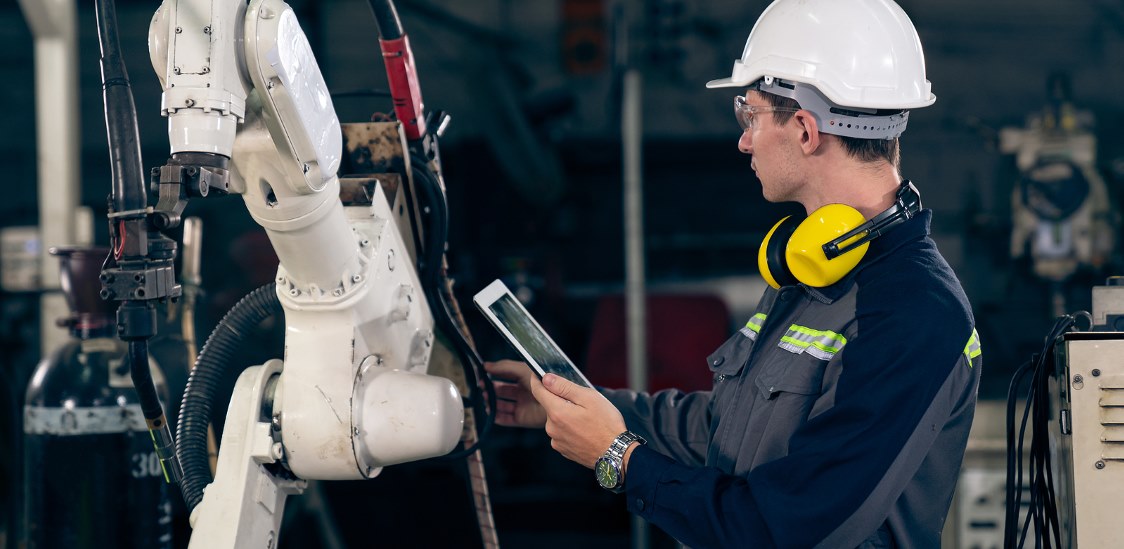In the rapidly evolving landscape of industrial telecommunications, 2024 promises a transformative wave that will redefine how businesses operate, particularly in sectors heavily reliant on robust and reliable communication systems. This article explores four key trends anticipated to shape the industrial telecommunications landscape: the proliferation of connected workers and workplaces, the rise of edge computing, the integration of augmented reality, and the further expansion of 5G technology.
#1: More Connected Workers, More Connected Workplaces
In the throes of Industry 4.0, the interconnectivity of systems, human workers, and workspaces will revolutionize commercial operations' efficiency and worker productivity. Integrating Internet of Things (IoT) sensor data is at the forefront of this evolution as industries leverage sensor data to enable proactive equipment maintenance and mitigate emergencies before they escalate. This interconnectivity not only enhances operational efficiency but also extends the lifespan of critical assets.
In tandem with intelligent software, IoT sensor data can help companies deploy a predictive maintenance model. This model is when AI analyzes data and maintenance history on a particular machine and forecasts when a potential problem may arise. Preemptively performing maintenance can help extend the life of assets and boost the time expensive machinery and tools are available. Developing a joint operations and planning schedule can also assist in coordinating maintenance work on machines. Scheduling repairs during lower production demand or downtime periods can help maintain efficiency and prevent unnecessary interruptions. This model is only possible with a network capable of transmitting and processing a high volume of data simultaneously from several sources.
Asset location management and proximity alert systems are becoming indispensable tools for ensuring the safety of workers in dynamic industrial environments. These solutions track the precise location of assets and provide real-time alerts to prevent accidents and enhance emergency response times. Integrating hazardous material and emergency alert systems further reinforces the commitment to worker safety, making industrial professionals happier and the industry more attractive to the workforce.
#2: Edge Computing: Shaping the Future of Decision-Making
The rising tide of edge computing marks the second significant trend in industrial telecommunications. Traditionally, decision-making processes were centralized, often resulting in delays and inefficiencies. The edge computing approach processes data closer to its source, diminishing latency and fostering highly accurate, real-time decision-making.
Edge computing will be particularly valuable in constrained environments like construction sites, underground mines, automated warehouses, and factories, where space and computing resources are limited. The shift towards edge processing reflects a changing emphasis from wide bandwidth capacity to the cloud to prioritizing local network data flow and processing speed.
As high-volume data capture becomes more prevalent in industrial settings, the benefits of edge computing are better underscored. The ability to process data on-site saves time and materials, contributing to more sustainable and cost-effective operations.
#3: Augmented Reality: Enhancing Worker Support and Safety
Augmented Reality (AR) is emerging as a transformative force in the industrial toolkit, providing innovative solutions to enhance on-the-job worker support and safety. AR applications offer real-time information on dangerous areas, enabling workers to navigate hazardous environments with greater awareness. AR lens diagnostics allow for swift identification of unsafe equipment and situations and provide streamlining maintenance processes to bring equipment back into safe operating conditions.
Heads-Up Display (HUD) technology is revolutionizing how workers receive job details and guidance. Connected workplaces can now issue prompts directly to workers' displays, facilitating quick responses and more accurate execution of tasks. This instant communication improves efficiency and minimizes worker downtime, translating to significant business cost savings.
The successful convergence of augmented reality with industrial workflows demands more than just a passing nod to connectivity; it necessitates a telecommunications backbone that can support the dynamic and data-intensive demands of AR applications. As AR becomes increasingly woven into the fabric of daily operations, from providing real-time diagnostics to offering heads-up displays for intuitive guidance, the reliability and stability of the underlying telecommunications network become paramount.
#4: 5G Expansion: Revolutionizing Industrial Connectivity
The fourth trend shaping the industrial telecommunications landscape, perhaps the most well-known, is the continued expansion of 5G technology. 5G has struggled in recent years to live up to the hype the technologists have promised, but new options in the technology stack have the potential to be a revolutionary step forward. Continued advancement will help eliminate current pain points in commercial usage and unlock new possibilities for industries.
Similar to Open RAN, which has allowed the industry to optimize components in the 5G core, new technology in hybrid mesh solutions allows a flexible and scalable network architecture into the industrial operating environment. Mesh networks enable extending the range and coverage in remote or expansive industrial sites, offering a more comprehensive and reliable network. Mesh network structures allow for the seamless integration of diverse devices and applications, fostering the development of large automated fleets of robots and enhancing overall network security.
Achieving upload/download symmetry is a critical aspect of 5G expansion for industrial and commercial applications, ensuring the network can handle the increasing demands of data-intensive applications like 4K video and LIDAR.
Improving 5G networks with mesh technology opens the door to unprecedented industrial and commercial application possibilities. From supporting advanced automation to enabling real-time data analytics, 5G with mesh is set to become the foundation of Industry 4.0.
#5: The Essential Role of Telecommunications Infrastructure
The trends shaping industrial telecommunications in 2024 underscore the critical role of a reliable and stable telecommunications infrastructure. As industries embrace connected workforces, leverage edge computing, integrate augmented reality, and expand into new possibilities of 5G with mesh technology, the need for robust telecommunication networks becomes more apparent than ever.
Telecommunications infrastructure is no longer just a support system; it is an essential enabler of commercial business, comparable in importance to financial resources. Companies that invest in cutting-edge telecommunications solutions are not merely keeping pace with technological advancements - they are future-proofing operations and positioning themselves at the forefront of innovation.
As we navigate the future of industrial telecommunications, one thing is clear: the seamless integration of these trends relies on the foundation of a reliable, stable, and forward-looking telecommunications infrastructure. The businesses that recognize and invest in this foundation will be the ones that thrive in the dynamic and interconnected industrial landscape of tomorrow.




















